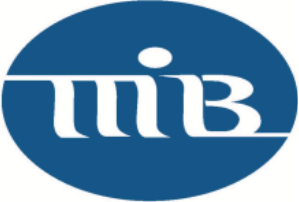RESPA. Q: We have a consumer real estate loan that we escrow for the property taxes and insurance. We did their annual escrow account analysis in August 2022. Now, we are paying their taxes and see their tax bill has increased by $1,300 from the last bill. We did not have this new tax information until the bill came.
Is it allowable or advisable to do a new escrow account analysis so the system will refigure the escrow payment using the higher tax bill?
A: Yes, it is allowed but not required. If the bank decides to do another analysis, it will have to issue a short-year escrow account statement to cover any time since the last escrow account statement (after the August analysis). This will also reset the escrow computation year, so annual escrow account analyses will occur in October instead of August.
An alternative course of action is inaction, meaning do nothing at this time, allow a deficiency to occur, and make any necessary adjustments for the next annual escrow account analysis next August. Either course of action is permitted. The choice of response is up to the bank.
Flood Insurance. Q: We are acquiring a bank, and in some instances, we cannot find proof of continuous flood coverage in their flood files. For example, the bank would sometimes discard the previous year’s flood declarations page without saving an electronic copy after receiving the current year’s copy.
To be clear, we do not believe the bank actually had coverage gaps. Our concern is that during an exam, would our FDIC examiner potentially cite us for the lack of evidence? Would it be more important to ensure flood coverage records are complete post-acquisition? We have considered reaching out to the various insurance agents to try to get past coverage records, but we are unsure if we can dedicate the resources unless it is absolutely necessary.
A: The bank must ensure flood insurance records are complete, especially going forward. We cannot speak to what examiners might or might not cite. You should contact your exam team to see if they believe you need to reach out to the various insurance agents for prior records.
EFTA. Q: We have an existing deposit customer who has had an account with us for over a year. Now, the customer is requesting to have overdraft protection added to their account. If the customer comes in and signs a form to have the overdraft protection added to their account, do we also need to give them a new Regulation E disclosure?
A: A full Reg E initial disclosure is not required unless there have been any changes that have not already been disclosed to the customer. However, the bank needs to comply with the opt-in requirements noted in the regulation: Provide a separate written notice that describes the bank’s overdraft service, give the customer a reasonable time or opportunity to opt-in to the overdraft service for ATM and one-time debit card transactions, obtain the customer’s affirmative consent (opt-in) to the bank’s payment of ATM and one-time debit card transactions, and provide the customer with written confirmation of their opt-in (including a statement of their right to revoke that consent).
Insider Credit. Q: If a new member of the bank’s board of directors has an existing deposit relationship and/or existing loans with the bank, is there anything we need to look at? As they are not an executive officer, they would not be subject to the $100,000 limit on “other purpose” loans, correct?
A: Existing loans not made in contemplation of the person becoming an “insider” need not conform to the requirements of Regulation O until such extensions of credit are renewed, revised, or extended. At that time, the extensions of credit would be treated as a new extension of credit and, therefore, subject to all requirements of Regulation O. However, such transition loans must be counted toward the individual and aggregate lending limits of Regulation O as soon as the borrower becomes an insider.
This same treatment would apply to extensions of credit to a director or principal shareholder who later becomes an executive officer. Such extensions of credit need not conform to the provisions of Regulation O that apply only to executive officers until such extensions of credit are renewed, revised, or extended. However, the amount of any such extensions of credit count toward the quantitative limits for loans to executive officers as soon as the director or principal shareholder becomes an executive officer.
Keep in mind that many lines of credit by a bank to an insider must be approved by the bank’s board of directors every 14 months. Each such approval constitutes a new “extension of credit.” Accordingly, transition lines of credit loans generally must conform to the requirements of Regulation O within 14 months of the borrower becoming an insider – by the time of the next new “extension of credit.”
Also, remember that any overdrafts involving this new director’s deposit accounts must comply with Regulation O limitations from the time they become an insider.
TILA. Q: We have a situation with a mortgage loan where the Loan Estimate (LE) was properly completed with the UST1 index, but the final Closing Disclosure (CD) was completed with an incorrect SOFR index. The note and mortgage both correctly indicate the UST1 index. The SOFR index tracks lower than UST1, so the disclosed finance charge and annual percentage rate (APR) are higher than those disclosed on the CD. We are unsure how to correct this since the loan has already been closed and booked.
A: The TILA provides a “cure” provision if done timely. The bank would recalculate/verify the APR and FC it disclosed, but using the correct values for the amount financed and payment schedule(s) (if those in the CD were not correct/in line with the note). If the APR verification program shows a violation, you should compute what (if any) restitution is due. If no monthly payment has yet come due, you should enter “1” in the space for number of payments made. Then, see what the program tells you is due. You will also need to issue a corrected CD since this is part of proper correction under the TRID rules.
In addition, you should work with the bank’s legal counsel from the beginning on making this cure.
BSA. Q: We have a situation where a customer brought in $10,000 cash on behalf of a business and $3,000 cash for a personal loan payment. The customer deposited it into a personal account on the same business day. Would we be required to file a Currency Transaction Report (CTR) on this customer?
A: Yes, a CTR must be filed since you had over $10,000 in currency brought in by or on behalf of any person during any business day.
EFTA/TILA. Q: The person who usually works our disputes is no longer here. Would you refresh my memory on the following: Our customer ordered tires online and authorized payment through Square but never received any tires and the phone number of the guy selling the tires is no longer valid. Does the bank incur a loss when our customer authorized this?
A: It may depend on whether the customer used a debit or credit card. If a debit card was used, the bank is off the hook – no investigation under Regulation E or customer reimbursement. The EFTA and Regulation E do not have a provision about customers not getting what they ordered, purchased, etc.
On the other hand, if it involves a credit card, TILA and Regulation Z have such a provision, and the bank will have to investigate and absorb at least some of the loss.
TILA. Q: Our bank’s practice has been to have our lenders either obtain the signatures of persons entitled to rescind a particular loan on the rescission notice for non-cancellation or calling/e-mailing the individuals, then document the non-cancellation section themselves after the rescission period has expired and before disbursement. We have talked to other banks who claim not to do this, and their practice is if they have not been contacted by “the date” the transaction is being canceled, then they disburse funds.
What is the right way to manage this? We are leaning towards not gathering these signatures or doing the follow-up we are currently doing, but we would like some guidance.
A: Regulation Z and the TILA do not require a signature or follow-up, just being “reasonably satisfied” that the consumer(s) has not canceled. Since almost no one cancels, most lenders go with “the date” business. However, I cannot fault the bank for what it has been doing – making sure the consumer(s) has not canceled before disbursing – which is the route some lenders choose to follow.
Of course, you need to ensure your lenders/closers do not do what sometimes happens: getting borrowers (and non-borrowers entitled to rescind) to sign the confirmations at closing (with the correct date). This is hard to catch, as a reviewer, unless you happen to have a loan in your sample that had closed but not reached a disbursement date (rare) – or have this happen at your own closing for a rescindable loan (as happened once when my wife and I were refinancing our home). As they say, such a “confirmation” is not worth the paper it is printed on.
Young & Associates provides banks and thrifts with support for their compliance programs, independent reviews, and in-bank training, as well as a full menu of management consulting, loan review, IT consulting, and policy systems.









